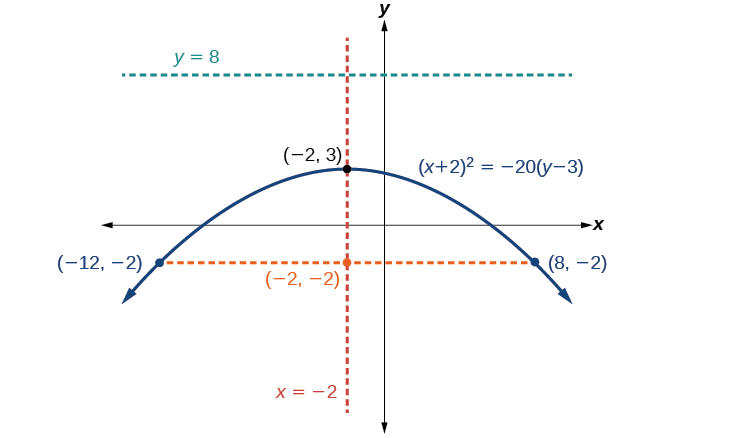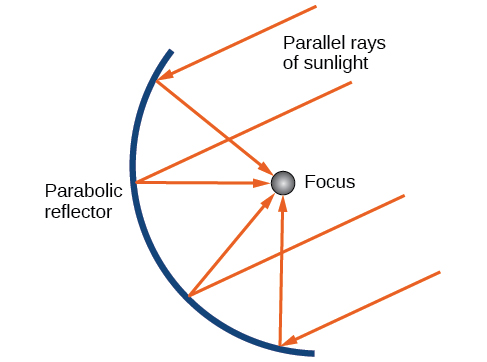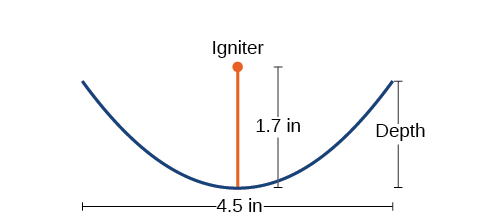| << Chapter < Page | Chapter >> Page > |
Graph Identify and label the vertex, axis of symmetry, focus, directrix, and endpoints of the latus rectum.
Vertex: Axis of symmetry: Focus: Directrix: Endpoints of the latus rectum: and

As we mentioned at the beginning of the section, parabolas are used to design many objects we use every day, such as telescopes, suspension bridges, microphones, and radar equipment. Parabolic mirrors, such as the one used to light the Olympic torch, have a very unique reflecting property. When rays of light parallel to the parabola’s axis of symmetry are directed toward any surface of the mirror, the light is reflected directly to the focus. See [link] . This is why the Olympic torch is ignited when it is held at the focus of the parabolic mirror.

Parabolic mirrors have the ability to focus the sun’s energy to a single point, raising the temperature hundreds of degrees in a matter of seconds. Thus, parabolic mirrors are featured in many low-cost, energy efficient solar products, such as solar cookers, solar heaters, and even travel-sized fire starters.
A cross-section of a design for a travel-sized solar fire starter is shown in [link] . The sun’s rays reflect off the parabolic mirror toward an object attached to the igniter. Because the igniter is located at the focus of the parabola, the reflected rays cause the object to burn in just seconds.

The dish is about 0.74 inches deep.
Balcony-sized solar cookers have been designed for families living in India. The top of a dish has a diameter of 1600 mm. The sun’s rays reflect off the parabolic mirror toward the “cooker,” which is placed 320 mm from the base.
Access these online resources for additional instruction and practice with parabolas.

Notification Switch
Would you like to follow the 'College algebra' conversation and receive update notifications?